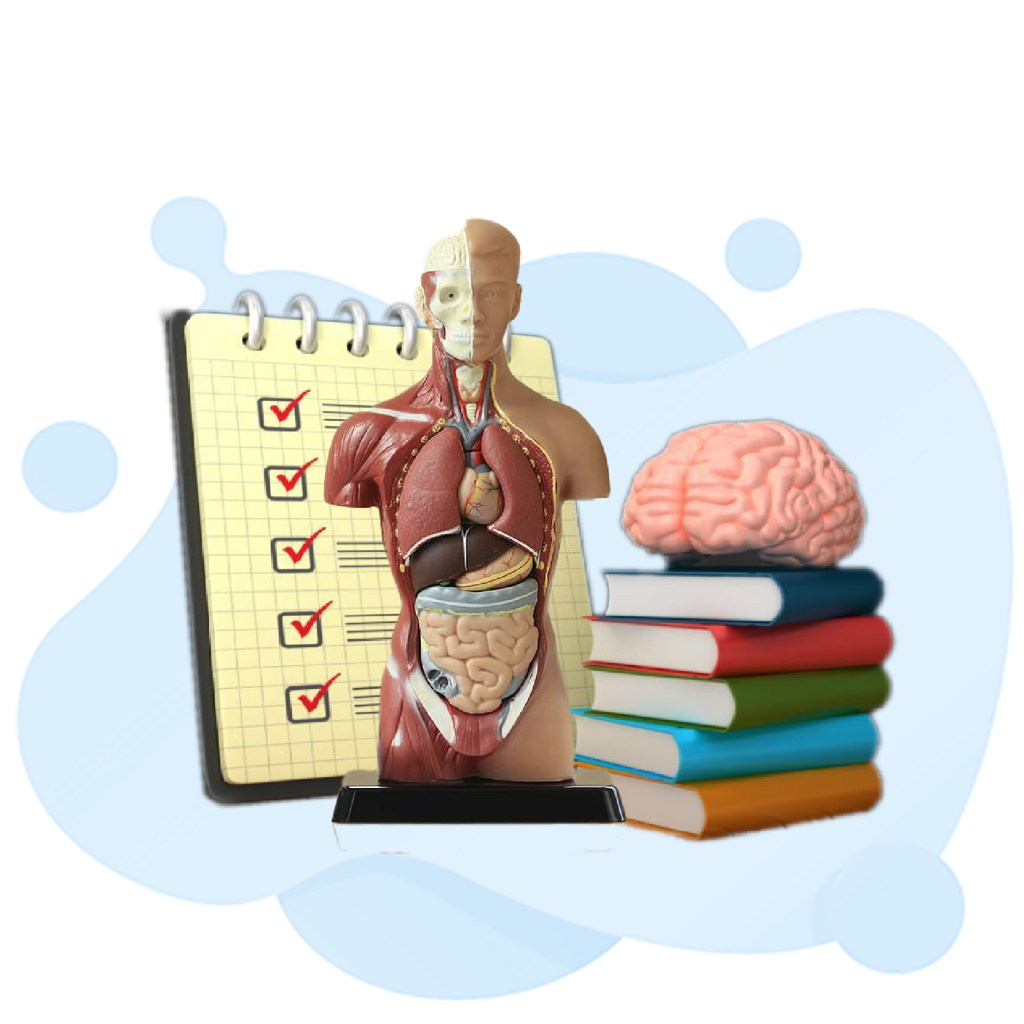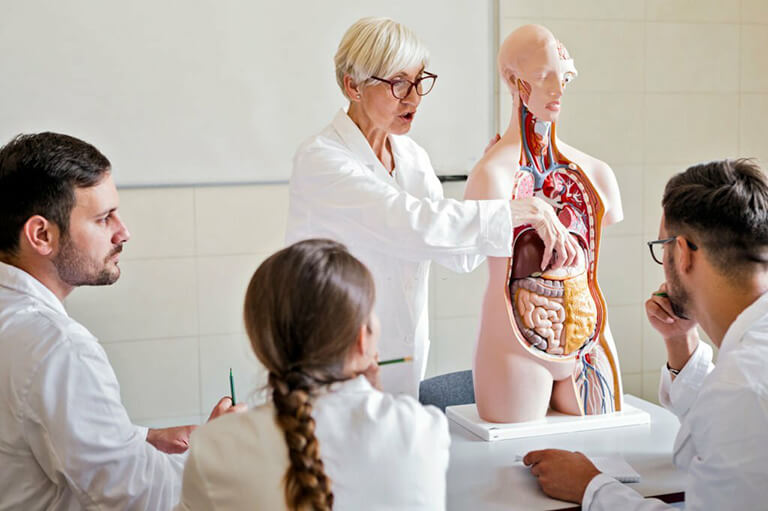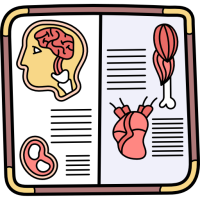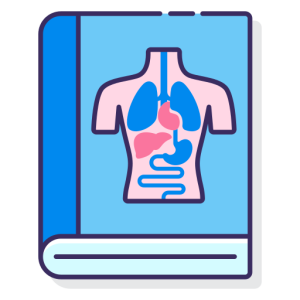Anatomy Practice Test 2023

As the clock ticks and the exam paper is handed out, students brace themselves for the challenge that lies ahead – the anatomy exam. This notorious test leaves no room for error as it delves into the intricate details of human structure, forcing students to recall everything from muscles and bones to organs and systems. It’s a mental marathon where every second counts. The key to success lies not only in memorization but also in understanding. Anatomy is more than just a jumble of terms – it’s about recognizing patterns, connections, and functions within the human body. By grasping these concepts, students can navigate through complex questions with ease, making sense of seemingly unrelated details.
Free Anatomy Practice Test Online
Anatomy and Physiology Final Exam
The Anatomy and Physiology Final Exam can undoubtedly induce a mix of excitement and anxiety. With all the knowledge we have acquired throughout the semester, it is both thrilling and daunting to put it to the test. However, rather than viewing it as just another exam, let us take a step back and appreciate how this final assessment embodies our journey of understanding the intricacies of the human body.
As we sit in our seats, surrounded by nervous energy, let us remember that this exam is not solely about regurgitating facts or memorizing terms. It is an opportunity to demonstrate our comprehension of complex concepts and connect different elements together in order to truly grasp how our bodies function. This final exam challenges us to go beyond superficial understanding; it pushes us to analyze relationships between organs, systems, and physiological processes. Let’s embrace this chance to showcase not only what we have learned but also how we have grown as critical thinkers and aspiring healthcare professionals.
In essence, even though exams may be seen as stressful or overwhelming at times, they serve as milestones in our academic journey. The Anatomy and Physiology Final Exam specifically facilitates a holistic approach towards learning about ourselves. It allows us not only to comprehend intricate details about bone structures or muscle movements but also understand their significance within the bigger picture – a beautiful symphony orchestrated by evolution over millions of years. So instead of dreading this upcoming examination period, let’s cultivate enthusiasm for showcasing our hard-earned knowledge while celebrating the multifaceted wonder that is human anatomy and physiology.
Anatomy Test Questions
The study of anatomy often brings to mind images of static diagrams and memorizing long lists of anatomical structures. However, anatomy tests have evolved to be much more dynamic and comprehensive, requiring students to not only identify structures but also understand their functions and their relationship with other body systems. One common challenge in these tests is the integration of knowledge across different areas of the body. For example, a question might ask how a muscle contraction in the arm affects movement in the leg. This forces students to think beyond isolated body parts and consider the interconnectedness of the human body as a whole.
Another interesting aspect of anatomy test questions is their focus on clinical applications. Aspiring healthcare professionals must learn to apply anatomical knowledge in practical situations such as diagnosing injuries or conducting surgeries. Therefore, test questions may present scenarios that require students to analyze symptoms and make connections between anatomical structures and physiological processes. These types of questions not only assess theoretical knowledge but also evaluate problem-solving skills within a clinical context, preparing students for real-life medical practices.
Anatomy test questions also tap into critical thinking abilities by challenging students to relate concepts from anatomy with those from other scientific disciplines such as physiology or pathology. By doing so, they encourage learners to develop a holistic understanding that extends beyond mere rote memorization. For instance, an examiner may present a scenario where an individual’s abnormal bone development is linked with specific genetic mutations or metabolic disorders, prompting students to make connections across disciplines and apply their broader scientific knowledge to solve the problem. This not only enhances their analytical skills but also prepares them for real-world situations where they will need to apply interdisciplinary knowledge in medical practice.

Anatomy Exam 3 Quizlet
Studying for an anatomy exam can be a daunting task, but thanks to Quizlet, the process has become much more manageable. The Anatomy Exam 3 Quizlet is a game-changer for students seeking an extra edge in their studies. With flashcards specifically tailored to the content covered in this crucial test, students can now review important concepts and definitions effortlessly.
One of the highlights of using Quizlet for anatomy exam preparation is its versatility. Not only does it provide traditional flashcards that allow users to match terms with their corresponding definitions, but it also offers other interactive features such as games and practice quizzes. This variety keeps the studying experience engaging and enhances long-term memory retention.
Moreover, including visual aids like diagrams and illustrations within these flashcards further reinforces understanding and facilitates memorization. By incorporating different learning styles into one convenient platform, Quizlet caters to a wide range of student preferences.
In conclusion, if you’re looking for an effective tool to help you ace your upcoming Anatomy Exam 3, look no further than Quizlet. Its user-friendly interface combined with personalized study materials makes it a valuable resource worth exploring. So let go of those overwhelming study guides and embrace the simplicity and efficiency of Quizlet’s Anatomy Exam 3 flashcards – your future self will thank you when you confidently breeze through that next exam!
Anatomy Final Exam Study Guide
As the dreaded final exams approach, it’s time to buckle down and focus on studying for that anatomy test. But where do you start? With the vast amount of information covered in an anatomy course, it can be overwhelming trying to figure out what exactly you need to study.

One effective way to approach studying for an anatomy final exam is by creating a study guide. A study guide acts as a roadmap, helping you navigate through the intricacies of the human body. By organizing key concepts, terms, and diagrams in a concise format, you’ll have a handy resource that allows you to review and reinforce your knowledge. Plus, creating your own study guide forces you to actively engage with the material, making it easier to remember when exam day comes around.
Another tip that can significantly enhance your study experience is seeking out additional resources beyond your textbook or lecture notes. There are numerous online platforms such as anatomy websites, interactive tools, and even virtual dissection programs that offer a more immersive learning experience. These resources not only help solidify your understanding but also provide fresh perspectives on complex topics. Consider joining online forums or discussion groups focused on anatomy where fellow students may share their insights or recommend helpful resources they found along their own academic journey.
By following these strategies – creating a comprehensive study guide and utilizing supplementary materials – you can approach your anatomy final exam with confidence and tackle even the most challenging questions thrown at you come test day! Remember: preparation is key!
Anatomy Lecture Exam 1
In the world of anatomy, the first exam is often dreaded by students. With an overwhelming amount of information to digest and retain, it’s no wonder that anxiety levels run high during this time. However, instead of succumbing to fear, we should embrace this challenge as an opportunity for growth and learning.
One fresh perspective to approach the anatomy lecture exam 1 is to focus on understanding the underlying principles rather than simply memorizing facts. By delving into concepts such as anatomical relationships and functional interactions between structures, we gain a deeper comprehension of how our bodies function as a whole. This not only helps us nail down specific details but also enables us to connect the dots and make sense out of complex anatomical systems.
Another key insight for acing the first anatomy exam lies in effective study habits and techniques. Instead of passively reading through endless textbook chapters, why not try active learning methods? Engaging with different visual aids like diagrams or interactive apps can greatly enhance your understanding and retention of information. Additionally, forming study groups with classmates can help reinforce concepts through discussions and brainstorming sessions.
In summary, approaching the anatomy lecture exam 1 with a fresh mindset focused on conceptual understanding and active learning can lead to greater success. By embracing this challenge head-on and implementing effective study habits, we can overcome anxiety while gaining valuable insights into the intricate workings of the human body. So let’s dive in fearlessly, armed with determination and curiosity!

Human Anatomy Final Exam
The human anatomy final exam is oftentimes considered the pinnacle of all academic assessments for students pursuing careers in healthcare. It not only requires an extensive understanding of the intricate structures and functions of the human body but also demands practical application and critical thinking skills to solve complex anatomical problems. As students prepare for this nerve-wracking examination, they delve deep into the world of bones, muscles, organs, and nerves, uncovering hidden connections between systems that are crucial for maintaining bodily functions.
During a human anatomy final exam, students are faced with a myriad of questions that challenge their knowledge in various areas. From identifying structures on cadavers to interpreting X-rays or CT scans accurately, this comprehensive test examines both theoretical knowledge and practical expertise. Furthermore, it tests how well students can synthesize information from different sources and apply it to real-life scenarios. In essence, the ultimate goal of a human anatomy final exam is not only to assess memorization but also to evaluate the ability to think critically and make sound judgments based on anatomical understanding.
Overall, a human anatomy final exam serves as an opportunity for students to demonstrate their comprehensive grasp on the complexities of the human body while preparing them for future clinical practice. By pushing their limits in terms of recall abilities and analytical thinking processes within a time-constrained environment, these exams ultimately shape aspiring healthcare professionals into individuals who are proficient in providing accurate diagnoses based on thorough anatomical analyses. So next time you pass by someone frantically studying diagrams or reciting bone names out loud before a human anatomy final exam, remember that they are not just memorizing information for the sake of passing a test. They are investing their time and effort to develop the knowledge and skills needed to save lives and improve patient outcomes.
Anatomy and Physiology CLEP Exam
The Anatomy and Physiology CLEP exam is a challenging test that requires a deep understanding of the human body. It covers topics such as cell biology, tissues, organs, and systems. One interesting aspect of this exam is the emphasis on interconnectivity within the body. For example, studying the digestive system may not only involve memorizing its parts and functions but also understanding how it interacts with other systems like the circulatory system or endocrine system.

Another intriguing aspect of the Anatomy and Physiology CLEP exam is its practical applications in healthcare professions. Medical professionals rely on their knowledge of anatomy and physiology to diagnose illnesses, develop treatment plans, and perform procedures effectively. By passing this exam, students demonstrate their readiness to pursue careers in fields like nursing, physical therapy, or physician assistantship. The breadth and depth of knowledge required for success on this exam is a testament to the complexity and intricacy of the human body
Overall, taking the Anatomy and Physiology CLEP exam offers students a chance to delve deeper into our remarkable anatomy while preparing for future careers in healthcare. Whether you’re fascinated by how different systems work together or interested in pursuing a profession focused on helping people stay healthy, mastering this subject will prove invaluable along your journey.
Not only does the Anatomy and Physiology CLEP exam provide a solid foundation for future healthcare professionals, but it also offers a unique opportunity to gain a deeper appreciation for the intricacies of the human body. As students dive into topics such as cell structure, organ systems, and physiological processes, they develop a comprehensive understanding of how each component functions harmoniously to maintain optimal health.
Dental Anatomy Exam
The dental anatomy exam is often dreaded by dental students, but it serves a crucial purpose in their education. This exam tests the students’ knowledge and understanding of the structures and functions of the teeth, jaws, and surrounding tissues. It requires them to accurately identify different types of teeth, understand their variations, and comprehend how they contribute to proper mastication and speech.
One interesting aspect of the dental anatomy exam is that it goes beyond simply memorizing textbook information. Students are often challenged with real-life scenarios where they have to apply their knowledge to diagnose oral conditions or determine appropriate treatment options. This not only tests their understanding of dental anatomy but also their problem-solving skills and critical thinking abilities.
Furthermore, the dental anatomy exam provides a foundation for clinical practice. By thoroughly studying human dentition in detail, dental students are better equipped to perform procedures such as tooth extractions or restorative treatments like fillings. By having a deep understanding of dental anatomy, these aspiring professionals can ensure optimal patient care and deliver successful outcomes.
Overall, while challenging and intimidating at times, the dental anatomy exam plays an essential role in preparing future dentists for their clinical practice. It is a rigorous assessment that not only establishes a strong theoretical foundation but also cultivates practical skills necessary for providing quality oral healthcare. By embracing this examination as an opportunity for growth rather than something to fear, students can excel in their studies and eventually make a significant impact on improving people’s oral health.